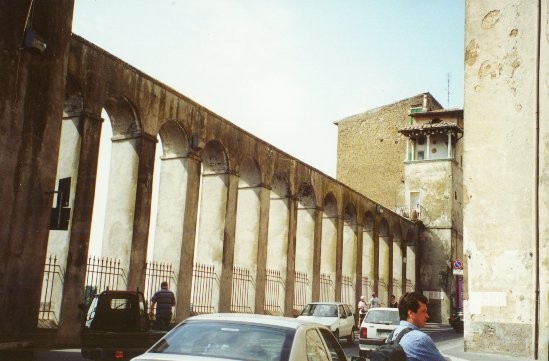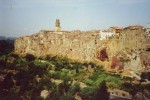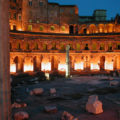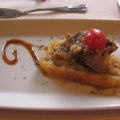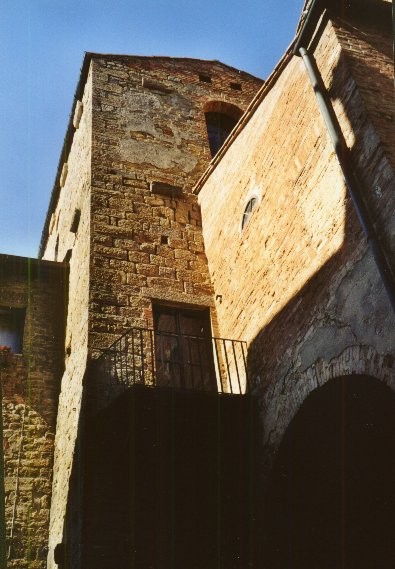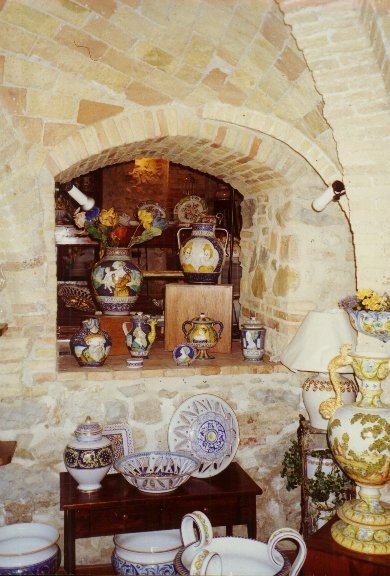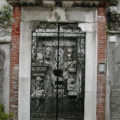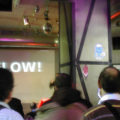Pitigliano, Tuscany. I think this trip took place in the summer of 2001.
Category Archives: Italy
How to Eat Like an Italian: Fundamentals of the Mediterranean Diet
You’ve probably heard about the “Mediterranean diet”, and know that it involves a lot of carbohydrates, olive oil, tomatoes, and other fresh vegetables, as well as lots of good red wine.
So what does a typical Italian meal look like? A restaurant meal may involve up to four courses: an antipasto, primo (first course), secondo (second course), and dessert. The antipasto and dessert are optional and often skipped, but to make a comfortably full meal you’re likely to want both the first and second courses. The first course is where you get the bulk of your carbohydrates, in a dish of pasta or rice (in the form of risotto).
A word about pasta: I have occasionally (reluctantly) eaten in trendy Italian restaurants in the US, at the behest of colleagues who thought it would be a treat for me. I do appreciate their kind intentions, but… It’s positively alarming what Americans will do to pasta! No matter what the menu claims, any single pasta dish that involves too many ingredients (sun-dried tomatoes, olives, tomato sauce, artichoke hearts, etc.) is not likely to be an “authentic” Italian dish. Furthermore, Italians don’t eat much chicken, and I have never seen an Italian put chicken in pasta. And feta cheese, being Greek, is not typically found in Italian pasta dishes.
…where was I? Ah, yes. The second course is where you get your proteins. It usually consists of meat or fish, very simply prepared, for example grilled over a log fire. You will also want to order one or more contorni (side dishes), such as vegetables, salad, or potatoes, since the meat usually arrives completely unaccompanied.
If you’re vegetarian, there’s not a lot of choice at most restaurants, but grilled scamorza (smoked cheese) and grilled vegetables are often available, and always yummy. There are some traditional vegetarian dishes such as melanzane alla parmigiana (eggplant parmesan) but, if you are a very strict vegetarian, you should ask, as often apparently vegetarian dishes do involve meat, e.g. a risotto with mushrooms will likely be cooked in meat broth.
Italian cooking is mostly very simple. It doesn’t need to be elaborate, because the basic ingredients are so good that it would be a shame to cover up the foods’ inherent flavors with heavy sauces and spices.
You can also have a cheese course after the second course, then dessert and/or fruit, then coffee. Coffee is not served with the dessert unless you specifically ask. Caveat: ordering a cappuccino after dinner is the sure mark of a tourist (if the waiter offers it, you’re in the wrong restaurant!). Italians rarely drink cappuccino after 10 am, and never after a meal.
A friend in Milan on business went alone to a restaurant for dinner. He overheard the couple at the next table – clearly Americans. When he answered his cellphone, they realized that he, too, was American, so they said hello. “The food is good here,” they said, “but the servings of pasta are really small!”
Yes, portions are small in Italy. Or, from the European point of view, portions in America are enormous! (And Europeans often add: “No wonder so many Americans are fat!”) That’s why in Italy you generally order a first course and a second course, as well as side dishes. A meal made up of a single course is called piatto unico (single plate), but these are not common.
Volterra: An Ancient Town in Tuscany
The old Roman roads still serve, though they’ve been repaved a few times in the last few millennia. We left Rome on the Via Aurelia (which goes up the west coast from Rome to Genoa), heading for a friend’s summer house in Marina di Bibbona in the Maremma region of Tuscany. Marina di Bibbona is a resort town with little to recommend it unless you’re there for the beach. Our friend commented that, since the tourists who come there are mainly German, there aren’t any good restaurants. <grin>
Leaving Marina di B., we headed east to Volterra, originally founded during the 8th century BC by the Etruscans. Like many such towns in Italy, it is richly layered with the accretions of successive conquering cultures.





A long-exploited natural resource of the area is alabaster, found in the surrounding hills in the form of large and small nodules embedded in clay. The artisans of Volterra carve this soft, luminous stone into urns, tabletops, lamps, statues, and chess sets. The most interesting work we saw was a chess set with pieces in the liknesses of film stars (Marilyn Monroe for the queens, John Wayne for the knights, etc.). The board was made of separate, undulating strips of celluloid – all carved from alabaster, of course.

Left: An alabaster lamp.
Castelli: Traditional Ceramics from the Hills of Abruzzo
Castelli is a small town in the hills of Abruzzo (the region on the east coast of central Italy, on the Adriatic sea), famous for its hand-painted ceramics – a centuries-old tradition in the area thanks to its local deposits of clay.
You start to see shops along the road kilometers before you get there, and the town is full of shops with wares ranging from the cheap and tacky to ornate, elegant, and expensive.
The traditional designs are rich floral themes, landscapes, portraits, and animals. The people and animals are mostly copied from/inspired by San Donato, a tiny church on the outskirts of Castelli whose ceiling is entirely covered with thick, decorated ceramic “bricksâ€, created centuries ago as votive offerings by local families.
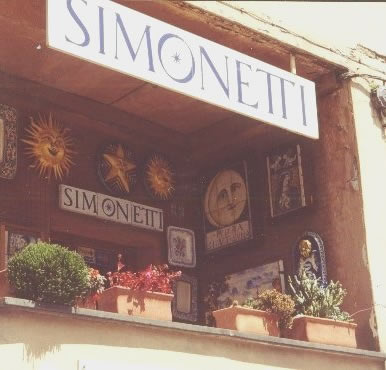
Those traditional designs are very busy, so if you prefer simple dinnerware, the Castelli style is not for you. The more elaborate pieces are better suited to hanging up as art than eating from. They are also fragile: after some years, the glaze on my serving bowl cracked when I put hot pasta sauce into it! (I still use it for salads.)
A few artisans are breaking with tradition and trying innovative, modern designs, but, at the time we visited, we didn’t see anything terribly exciting in this vein.
After extensive searching, we found a couple of simple pieces to “match†our eclectic collection of china. Then, having done enough shopping to work up an appetite, we decided it was time for lunch.
Tip: Although it’s almost impossible to eat badly in Italy, you can eat really well by asking local people for recommendations. Avoid the places advertising “tourist menus.” The food there will likely be cheap and decent, but, in Italy, you can do a lot better than decent!
We asked a shop owner to recommend a place. She sent us to Ristorante Tortella, where, she said, the Castellani themselves go when they eat out.
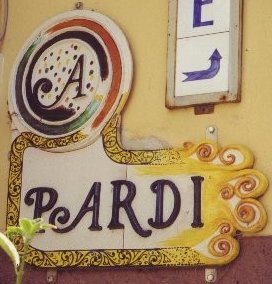
Lunch was indeed excellent: samples of several kinds of pasta, including maltagliati (“badly cut” – sheets of homemade pasta sliced into long triangles and rhomboids) with spinach and herbs; followed by grilled local lamb, washed down with a cheap but good local vintage of Montepulciano d’Abruzzo.
Tip: Wherever and whenever you travel in Italy, eat the local and seasonal specialties; these are almost always the tastiest items on the menu.
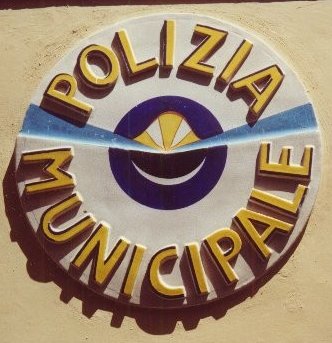
Reflections on Machismo: “Fierce Invalids Home from Hot Climates”
Tom Robbins has long been one of my favorite authors; every one of his seven novels is a gem, infused with his uniquely loopy sensibility and style. This novel (Amazon UK | US), published in May, 2000, was eerily timely in its discussion of West vs. East and Muslim vs. Christian, in the context of a story about a renegade CIA agent, an Amazonian curse, the third prophecy of Fatima, and a band of excommunicated nuns in the Syrian desert. Among many other things, Robbins glances at a topic which has long puzzled me:
“…the sexual insecurities that among men of the Middle East achieved titanic, even earth-changing proportions; insecurities that had spawned veils, shaven heads, clitoridectomies, house arrest, segregation, macho posturing, and three major religions.”
Many of the world’s cultures and religions focus to an amazing degree on controlling women, and especially women’s sexuality. (As Robbins points out, it’s a global phenomenon: “The Levant had no monopoly on penile insecurity.”) It is true that much of this nastiness is enforced by women themselves upon their daughters unto the nth generation, but it’s all intended to “benefit” the men.
For example, the “logic” behind clitoridectomy is that, if a woman can’t enjoy sex, she won’t go looking for it outside of marriage. Less brutal methods for ensuring fidelity include covering her up so no one sees her, and and locking her up so she never gets the chance. In many cultures, the punishments for a woman’s infidelity (or even imagined infidelity) are far more severe than for men: death by stoning, murder by the husband and his family, or societally-condoned mutilation.
I guess these men are all afraid that they just aren’t man enough to keep their women satisfied.
Italy has a reputation (in America, at least) as having a “macho” culture, but this doesn’t work the way macho does in other places. Most Italian men would rather prove their virility by seduction than by force. Every now and then some silly pollster does a Europe-wide or worldwide survey on “who’s the best at…” Italians are generally rated the best lovers, a result widely reported in the Italian press. ; )
I’ve met a young Irish woman working in Milan as an au pair. Recently she and three friends were out drinking at a bar. One was mildly propositioned by a man, whom she turned down. Later, apparently, something was slipped into their drinks. The woman who had been propositioned has confused memories of winding up somewhere with the guy, with her pants off, but when she said “No,” he desisted. She and another of the women then slept all weekend, leading them to believe they had been drugged. When they confronted the man a few days later, he looked guilty, but pointed out that they couldn’t prove anything.
I’d never heard of this “date rape drug,” though it’s apparently well known elsewhere, and a fairly common danger in some parts of the world. The Irish woman told me that, home in Ireland, she would never touch a drink in a pub or disco unless she’s seen it poured and picked it up from the bar herself.
I told the story to some Italian women, and they agreed that this is a highly unusual event in Italy. The reason they gave was an insight into the culture: “No Italian man would want to go to bed with a woman unless he’d earned her.”

